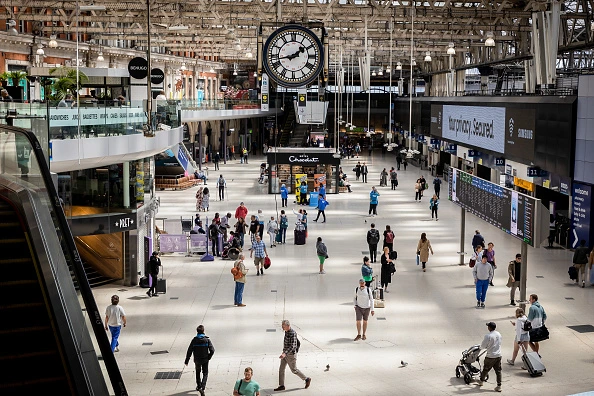
There are 14 railway terminals in London. That sounds like a lot, even by the standards of London’s some nine-million-strong population. For context, Beijing has eight main railway stations serving its 21 million people.

So if you decide where to live based on the obscure metric of “number of railway terminals per million people”, London is doing really, really well.
But it’s such a bother, isn’t it? Even without notable strike action, making the inconvenient, interchange-laden journey from Liverpool Street to London Bridge, for example, is the price we pay to travel cross-country; changing in Central London is the norm for many a journey, even though it’s expensive, inefficient, and adds to the footfall at stations that are already stereotypically congested.
In fact, as is so often the case, there’s actually a pretty sensible explanation for why London ended up with so many railway stations, even by European standards. As pioneers of the industrial revolution, the UK was the first country to build serious railway infrastructure. But in the hyper-entrepreneurial petit-bourgeois era of early industrialisation, there was no centralised transport system.
Because London has been the overwhelming economic centre of England since they knocked up the Bayeux Tapestry, all railway services tended to radiate from it. But the great railway boom of the 1830s and ’40s predated the arrival of the first underground railway, the Metropolitan Line, in 1863. And the difficulty and expense of demolishing existing suburbs meant that the new railways tended to terminate on the edge of the built-up area. The result was separate stations, run by different companies, all around today’s city centre.
In any case, I’m inclined to believe that having all these railway terminals, strewn around London like a contorted hula hoop, is actually a good thing. It’s easy to demonise Birmingham, which is fast outgrowing its ugly duckling stereotype – but Birmingham New Street serves as a good example of the problem with terminals whose trains go straight through the city.
There, the trains run north to south, services reaching both London and Manchester, with easy connections to Moor Street and Snow Hill stations. The choice to run tracks through the station makes the area immediately around it – in other words, central Birmingham – less navigable. The interlocking railway infrastructure strangles the city.
London railway terminal benefits
If the same had happened in London, in the absence of a precarious, hyperbolically ambitious cut-and-cover scheme, we’d lose the precious, contiguous urban core that runs all the way from Paddington to Fenchurch Street.
There’s another benefit to all these terminals; it means fewer areas end up being cut in half. Urban policy wonks have spent the longest time discussing how arterial roads split communities, but we rarely stop to think about how a railway line could divide one area from another, too. Yes, they’re much quieter than, say, the M1, but they’re just as hard to cross – and dividing lines that are mildly problematic in King’s Cross Central could’ve been overwhelming in areas in central London proper.
The suburban railways running through outer London are a testament to this point. In Islington, the North London Line sharply divides the well-to-do N1 postcode from the more mixed area of N7, and the East Coast Main Line makes the Arsenal Stadium feel miles away even if you live just to the north on Tollington Road, simply because there’s no road crossing for a mile. Imagine if those divides existed in Central London, cutting you off from St Paul’s because you lived on the wrong side of the tracks.
The takeaway here might seem obvious: all this infrastructure would be much better off underground. Well yes, it would, and that’s what Thameslink and the Elizabeth Line try to achieve, as do London’s subsurface Tube lines.
But it’s worth mentioning that when the Metropolitan and District railways were built, they lay on the urban fringe, which reduced disruption. Thameslink and the Elizabeth Line have been far more costly (and indeed extremely delayed) because they’re in the midst of a dense urban area. Also, if we wanted to connect, say, Liverpool Street and London Bridge underground, the tunnels would need to skirt around other underground lines.
So, we should appreciate the ubiquity of railway terminals in London for what they’re worth. Their existence is a testament to a tangential, tentative Victorian past where we stumbled through industrialisation, building great railway terminals as we went.
[Read more: Ranking London’s major rail terminals]






